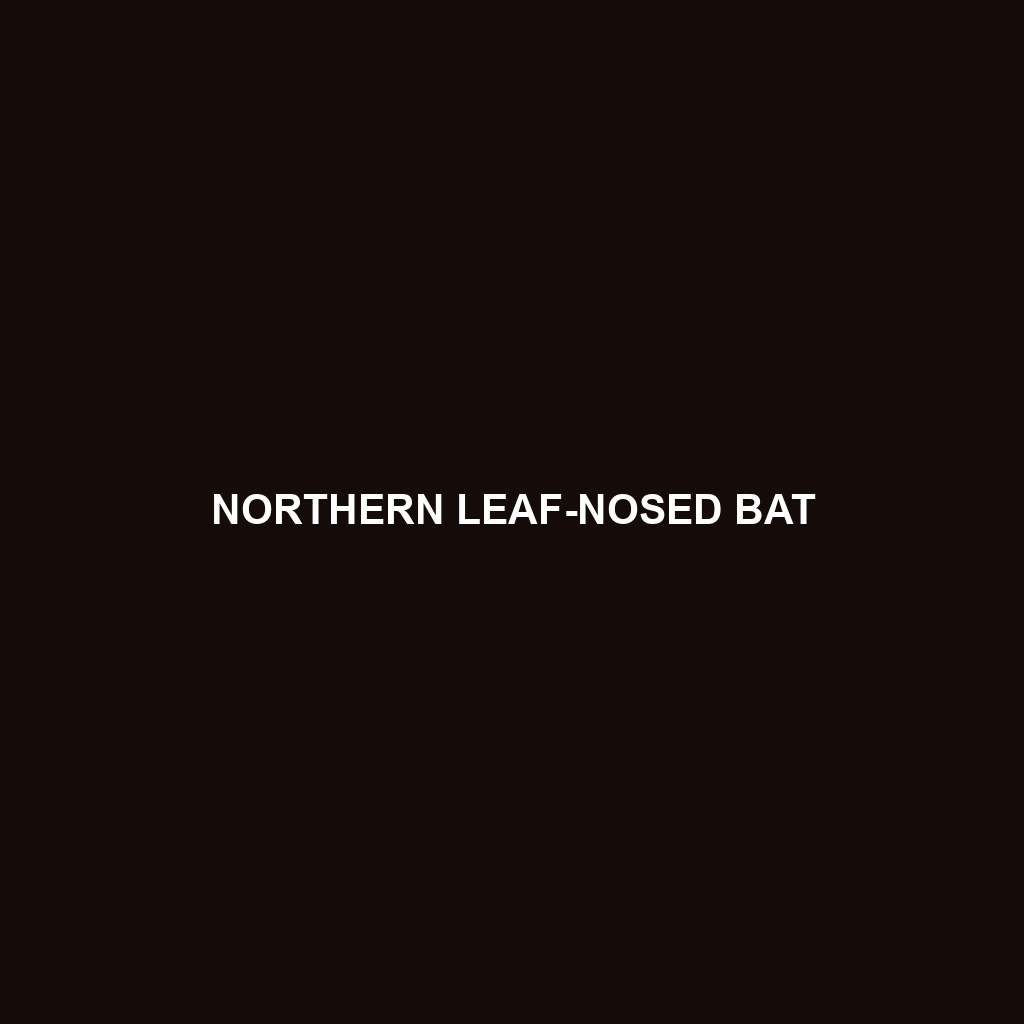Northern Leaf-nosed Bat Description
Common Name: Northern Leaf-nosed Bat
Scientific Name: Hipposideros diadema
Habitat
The Northern Leaf-nosed Bat is primarily found in Southeast Asia, particularly in countries such as Vietnam, Cambodia, and parts of Thailand. This bat species prefers humid, tropical forests and is frequently encountered in limestone caves, where it roosts in large colonies. These natural shelters provide the perfect environment for their survival, offering protection from predators and harsh weather conditions.
Physical Characteristics
Northern Leaf-nosed Bats are medium-sized bats, measuring approximately 8 to 10 centimeters in body length, with a wingspan that can reach up to 30 centimeters. Their distinctive appearance is characterized by a leaf-like structure on their noses, which is important for echolocation. They typically have a dark brown to grayish fur coat, with lighter underparts. Their large, prominent ears and unique nose leaf contribute to their specialized hunting abilities and distinguish them from other bat species.
Behavior
These bats are predominantly nocturnal, emerging at dusk to forage for food. They utilize echolocation to navigate and hunt for insects, demonstrating remarkable agility in flight. Northern Leaf-nosed Bats are social animals, often roosting in large colonies that can consist of hundreds of individuals. During the day, they are known to cluster together, sharing warmth and protection from environmental threats.
Diet
The diet of the Northern Leaf-nosed Bat primarily consists of insects, including moths, beetles, and other small invertebrates. They have specialized hunting behaviors, often foraging in the dense foliage and using their acute sense of hearing to locate prey. Their role as insectivores helps control pest populations, making them an integral part of their ecosystem.
Reproduction
Northern Leaf-nosed Bats typically breed once a year, with a breeding season that occurs during the warm months, usually from May to August. After a gestation period of about 2 to 3 months, females give birth to a single pup, which they nurse until it is able to fly independently. The nurturing behavior of mothers ensures the survival of the young in their often competitive environments.
Conservation Status
Currently, the Northern Leaf-nosed Bat is classified as ‘Vulnerable’ by the International Union for Conservation of Nature (IUCN). Threats to their population include habitat destruction due to deforestation and limestone mining, as well as human disturbance in their roosting sites. Conservation efforts are crucial for ensuring the long-term survival of this species.
Interesting Facts
One fascinating aspect of the Northern Leaf-nosed Bat is its unique nose leaf adaptation, which enhances its echolocation capabilities, allowing it to hunt in complete darkness. Additionally, they can often be seen roosting alongside other species of bats, showcasing their social nature.
Role in Ecosystem
The Northern Leaf-nosed Bat plays a vital role in its ecosystem as a pollinator and pest controller. By feeding on insects, it helps maintain ecological balance, providing benefits to agriculture and natural plant life. Their presence in the ecosystem signifies healthy biodiversity, making their conservation imperative for the overall health of tropical forest habitats.
